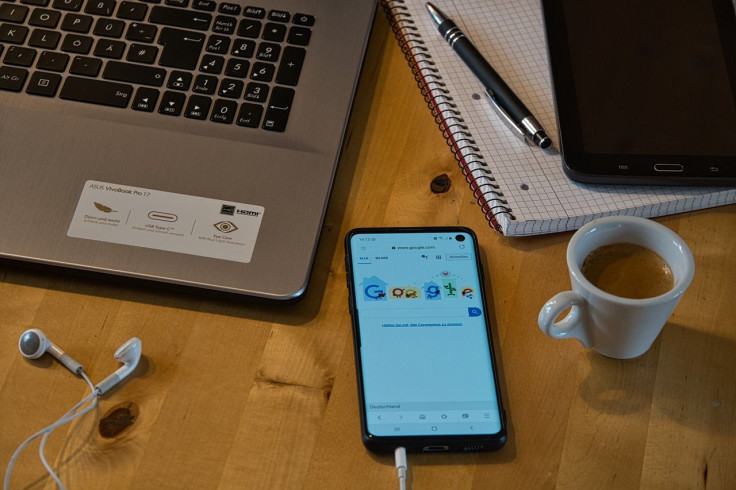Coronavirus Jobs: The Shift To Working From Home Going Much Better Than Expected

KEY POINTS
- Employees happy about eliminating the commute and nonessential meetings
- Technological issues resulted in the most complaints
- About half the U.S. workforce currently is working from home
An analysis by the global freelancing platform Upwork indicates the shift to work-from-home engendered by the coronavirus pandemic has gone much more smoothly than could have been expected and resulted in increased productivity.
In a blog post, Upwork chief economist Adam Ozimek said the analysis found about half the U.S. workforce is working from home, up from nearly 9.5% in 2010 and about 13.2% just before the pandemic hit.
“The impact of COVID-19 on the way that we work arguably represents the most drastic and rapid shift to the global workforce that we have seen since World War II. In a matter of weeks, America’s social distancing practices and rapid economic shutdown have pushed large swaths of the workforce out of the office and into the home,” Ozimek said.
The shift has implications for the commercial real estate market and downtown business districts dependent on officeworkers.
Remote work had been on the rise for 20 years, but the percentage of the workforce working remotely full time was relatively small.
“The sudden shock of COVID-19 represents an unexpected and massive trial run for many workers and companies,” Ozimek said.
A number of companies already have told employees they can expect to work from home through the end of the year while Facebook is planning to make the practice permanent for at least half its workforce, albeit at reduced salaries.
“It’s clear that COVID has changed a lot about our lives, and that certainly includes the way that most of us work,” Facebook CEO Mark Zuckerberg told employees in a livestream last week. “Coming out of this period, I expect that remote work is going to be a growing trend as well.”
Twitter CEO Jack Dorsey told employees in an email they can expect never to return to the office – except for those who need to maintain servers and other equipment.
“We've been very thoughtful in how we've approached this from the time we were one of the first companies to move to a work-from-home model,” a Twitter spokesperson told BuzzFeed News. “We'll continue to be, and we'll continue to put the safety of our people and communities first.”
Alaphabet/Google CEO Sundar Pichai said in a blog post Google employees would get $1,000 allowances to outfit their home offices.
“While it is no surprise that people have had to shift how they work together while being geographically apart, what our survey reveals is that remote work is working,” Ozimek said.
“When the economy finally reopens and social distancing measures are lifted, the labor force will look back on COVID-19 as the turning point in the remote work experiment.”
The analysis, based on interviews with 1,000 hiring managers April 22-28, indicated 56% of hiring managers think the shift to remote work has gone better than expected with only 10% indicating it had been a problem. Employees are happy about the lack of commuting, the elimination of unnecessary meetings and the reduced distractions.
Technological issues presented the biggest drawbacks, but those were expected to be addressed over time.
A third of hiring managers said they thought productivity had increased while 22.5% said it fell, and 61.9% said their experience as a result of the pandemic convinced them that more of the workforce should work remotely even as the health dangers dissipate.
“Prior to COVID-19, around half of hiring managers worked with remote talent to some degree -- today that number is at 94%. Fully remote teams have also increased sharply, from 2.3% to 20% in the post-COVID survey,” Ozimek said.
The expected growth rate for full-time remote work was pegged at 65% over the next five years.
© Copyright IBTimes 2024. All rights reserved.






















